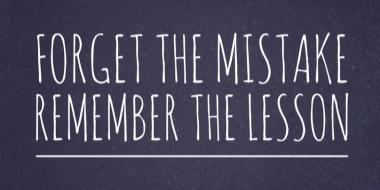The best fonts for your CV
You naturally want to create a great first impression with your CV. That’s why it’s worth giving some thought to the font that you use on your CV. While the content of your CV is important, presentation also matters. Given that recruiters only spend a few seconds skimming through your CV, the wrong font could mean that your CV is discarded without a second glance if it makes everything look unreadable — even if you do have the relevant skills and experience. So which fonts should you use on your CV and which ones should you give a wide berth? Here are some best practices.

Why font matters
You may not think it, but the font that you use on your CV says a lot about your personality, style and professionalism. In the same way that you would carefully select your attire for a job interview, you also need to be selective about the font on your CV to create a good impression. A good font makes your CV look attractive and easy to read, and exudes professionalism. A poor font choice, on the other hand, is likely to annoy recruiters if it makes everything on your CV harder to read.
Ultimately, the font you choose will depend on the company and the position you’re applying for; however, these are some basic guidelines to consider.
Select a font that’s readable
This goes without saying, but it’s important to keep in mind that recruiters don’t have a lot of time to spend on your CV. Therefore, any font that you choose needs to be easily read on a computer or in print. This means selecting a font that’s universal to most computer programs and printers.
As you’ll know your CV inside out, it can be difficult to take a step back and judge the readability of the font. That’s why it’s a good idea to get a friend or family member to have a look at your CV for an objective view.
Avoid mixing fonts
It’s a bad idea to mix fonts in your CV as doing so can make your CV look like a ransom note. Mixing fonts also makes it difficult for recruiters to scan and pick out relevant information at a glance.
Instead of using different fonts, use bold formatting and larger font sizes for headings and job titles, and italics for the companies you worked at.
Sans serif or serif?
We normally talk about two main font classifications: serif and sans-serif. Simply put, serif fonts add decorative strokes to the end of letters, while sans-serif fonts do not.
Examples of serif fonts:
Cambria
Garamond
Georgia
Times New Roman
Examples of sans-serifs
Arial
Calibri
Verdana
Trebuchet MS
In general, serif fonts make letters look more elegant than sans-serif fonts. This makes serif fonts suitable for applications for creative industries or senior level-jobs.
However, research has shown that sans-serif fonts are easier to read on a screen. They also look good on mobile devices and across various platforms and browsers. So, what’s the best font for your CV?
The best fonts for your CV
- Arial
For an easy-to-read font with no frills, Arial is the popular choice amongst recruiters. It’s also the default font for Google Docs and a standard font for Microsoft Word which means it will display correctly on most computers.
- Calibri
Now the default font for Microsoft Word, Calibri is a great option if you want recruiters to focus on the content of your CV rather than the design. What’s more, it’s clean, contemporary and easy on the eyes.
- Garamond
If you’re looking for a more traditional font that’s elegant in style, then Garamond may be for you, especially for academic or senior positions. As a plus, Garamond takes up less space than other fonts which means you’ll have no trouble keeping your CV to two pages.
- Georgia
For a classic-looking font, Georgia is a great alternative to Times New Roman. And because it was specifically designed for screens, recruiters won’t have a hard time reading it.
- Verdana
This is another font that was designed to be easy to read on screens, especially small and low-resolution screens. As Verdana has tall lower-case letters to help readability, small font sizes work better with this font.
The fonts to avoid on your CV
- Times New Roman
This was the default font in Word before it was replaced by Calibri. Thanks to its professional look, Times New Roman is still preferred by some recruiters. However, as everyone else is using it, your CV won’t stand out. What’s more, the font is unreadable in small sizes.
- Comic Sans
While it may look great on a flyer, Comic Sans is considered too frivolous for your CV. Originally designed for comic book lettering, this font was never intended for professional use.
- Courier
Initially designed for typewriters, this font makes your CV look old-fashioned. Unless that’s the look you’re going for, it’s best left off of your CV. Also, every letter is spaced evenly which is not great for readability.
- Brush script
It may be tempting to give your CV a personal touch by using a font that gives the impression that your CV was handwritten. However, Brush Script is not easy to read from a distance and looks a bit dated - which is unsurprising considering it was created in 1942.
Font size matters
The standard font size for CVs is 12 for the main text and between 14-16 points for headings, titles of sections or your name to make them stand out. However, as some fonts such as Arial, Trebuchet and Verdana take up more space on the page, it’s best to go one font size lower than the recommended sizes, so that everything still fits onto 2 A4 pages.
Steer clear of garish font colours
In general, a black font colour on a white background is best unless you’re applying for a creative position. That said, darker shades of blue, green or red can also work well and convey professionalism, friendliness or motivation. Grey is also a great choice as it exudes calm and elegance.
Whatever colour you choose, you’ll want to make sure that it complements the background of your CV. An online CV builder can take the guesswork out of choosing complementary colours. Take a look at one of the professionally designed CV templates and resume templates on Jobseeker to get started.
Impress employers with your CV
Step-by-step guidance to create a professional CV in minutes.



